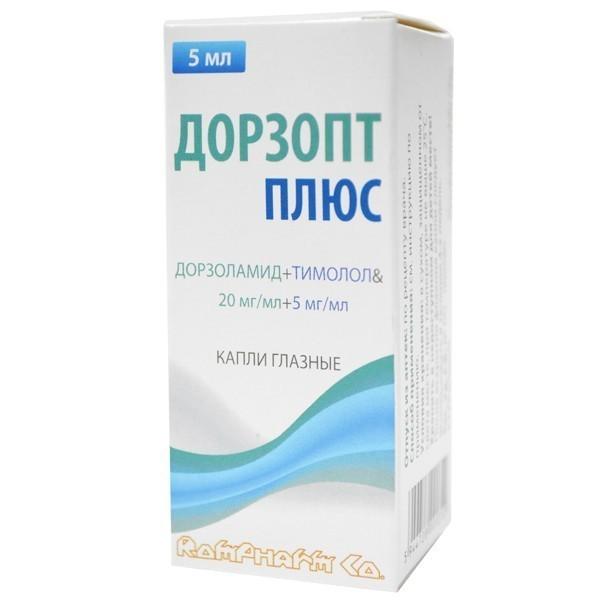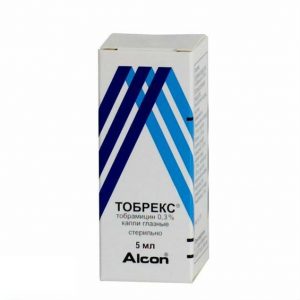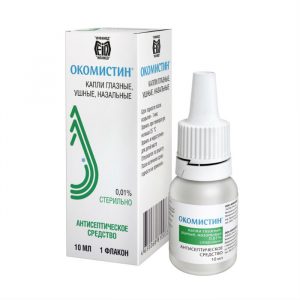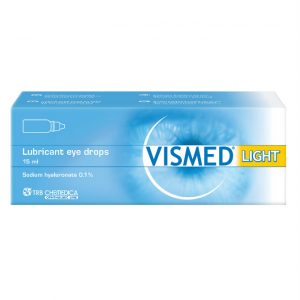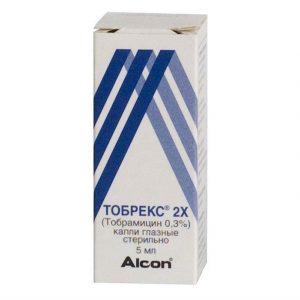Description
Release form
Dorzopt plus. Eye drops.
Packing
5 ml – polymer dropper bottle (1) – packs of cardboard.
Pharmacological action of
Anti-glaucoma drug contains two active components: dorzolamide and timolol, each of which reduces increased intraocular pressure by reducing the secretion of intraocular fluid. The combined effect of these substances in the combined drug Dorzopt Plus leads to a more pronounced decrease in intraocular pressure.
Dorzolamide is a selective type II carbonic anhydrase inhibitor. Inhibition of the carbonic anhydrase of the ciliary body leads to a decrease in the secretion of intraocular fluid, presumably due to a decrease in the formation of bicarbonate ions, which in turn leads to a slowdown in the transport of sodium and intraocular fluid.
Timolol is a non-selective beta-blocker. Although the exact mechanism of action of timolol in reducing intraocular pressure has not yet been established, a number of studies have shown a predominant decrease in the formation of intraocular fluid, as well as a slight increase in its outflow.
A decrease in intraocular pressure occurs 20 minutes after instillation, reaches a maximum after 2 hours and lasts at least 24 hours.
Pharmacokinetics
Dorzolamide
Absorption and distribution
Penetrates into the eye mainly through the cornea (to a lesser extent through the sclera or limb). Systemic absorption is low. After entering the bloodstream, it quickly penetrates red blood cells containing a significant amount of carbonic anhydrase II. Binding to plasma proteins – 33%.
Metabolism and excretion
Transforms into an N-deethylated metabolite, less active against carbonic anhydrase II, but able to block carbonic anhydrase I. After prolonged use, it accumulates in red blood cells. It is excreted by the kidneys unchanged and in the form of metabolites. After cancellation, the fast phase of elimination is replaced by a slow, due to the gradual release of dorzolamide from red blood cells, with T1 / 2 for about 4 months.
timolol
When applied topically, timolol enters the systemic circulation. The concentration of timolol in plasma was studied in 6 patients with topical administration of timolol in the form of eye drops 0.5% 2 times / day. The average Cmax after morning use was 0.46 ng / ml, after daytime use it was 0.35 ng / ml.
Indications
Increased intraocular pressure with: open-angle glaucoma
pseudoexfoliation glaucoma.
Contraindications
Hypersensitivity to the components of the drug
bronchial asthma (including a history of)
severe chronic obstructive pulmonary disease (COPD)
sinus bradycardia
AV block II and III degree
severe heart failure
cardiogenic shock
renal failure severe (KK less than 30 ml rkrd rpm)
lactation (breastfeeding)
children and adolescents under 18 years of age (because efficacy and safety are not well understood).
Precautions: liver failure, advanced age, diabetes mellitus.
Use during pregnancy and lactation
The drug Dorzopt Plus is contraindicated for use during pregnancy and lactation (breastfeeding ny).
Composition of
1 ml of solution contains:
Active substances: 1 ml of dorzolamide hydrochloride 22.26 mg, which corresponds to a dorzolamide content of 20 mg timolol maleate 6.84 mg, which corresponds to a content of timolol 5 mg.
Excipients: hyetillose – 1 mg, citric acid monohydrate – 4 mg, sodium hydroxide solution 1M – 0.066 ml, mannitol – 20 mg, benzalkonium chloride – 0.075 mg, sodium hydroxide solution 1M / acid hydrochloric solution 1M – up to pH 5.6 ± 0.1, purified water – up to 1 ml.
Dosage and administration
Instill 1 drop in a conjunctival sac 2 times / day.
If several local ophthalmic drugs are used in the treatment, their administration should occur at intervals of 10 minutes.
The duration of treatment is determined by the doctor depending on the clinical condition of the patient.
Side effects
Dorzolamide
From the side of the organ of vision: inflammation of the eyelid, lacrimation, irritation and peeling of the eyelid, iridocyclitis, point keratitis, transient myopia (which occurs after drug withdrawal).
From the side of the central nervous system and peripheral nervous system: headache, asthenia / fatigue, paresthesia.
Allergic reactions: angioedema, bronchospasm, urticaria, pruritus.
Other: epistaxis, pharyngeal irritation, dry mouth, rash.
Timolol
On the part of the organ of vision: conjunctivitis, blepharitis, keratitis, decreased sensitivity of the cornea, dry eye syndrome, visual disturbances, including changes in the refractive power of the eye (in some cases due to cancellation of myotics), diplopia, ptosis.
From the side of the central nervous system and peripheral nervous system: tinnitus, paresthesia, headache, asthenia, fatigue, dizziness, depression, insomnia, nightmares, decreased memory, increased symptoms of myasthenia gravis.
From the cardiovascular system: arrhythmia, decreased blood pressure, fainting, rhythm disturbances, cardiac arrest, edema, Raynaud’s syndrome, lowering the temperature of the arms and legs.
From the respiratory system: bronchospasm (mainly in patients with previous bronchial obstruction), cough, chest pain.
Dermatological reactions: alopecia, psoriasis-like rash or exacerbation of psoriasis.
Allergic reactions: anaphylaxis, angioedema, urticaria, local or generalized rash.
From the digestive system: diarrhea, dyspepsia, dry mouth.
Other: decreased libido, Peyronie’s disease, systemic lupus erythematosus.
Drug Interaction
No interaction studies have been conducted with Dorzopt Plus with other medicinal products.
However, it is possible to enhance the hypotensive effect and / or the development of pronounced bradycardia when combined with the use of ophthalmic solution timolol and slow calcium channel blockers, sympatholytics, beta-blockers, antiarrhythmic agents (including amiodarone), cardiac glycosides, parasympathomimetics, opioid analgesics, and MAO inhibitors.
The potential effect of systemic blockade of β-adrenoceptors (eg, HR reduction, depression) has been reported with the use of timolol and CYP2D6 isoenzyme inhibitors (eg quinidine or selective serotonin reuptake inhibitors).
Although the dorzolamide carbonic anhydrase inhibitor, a constituent of Dorsopt Plus, is used topically, it can penetrate the systemic circulation. In clinical studies of the use of ophthalmic solution of dorsolamide, no disorders of acid-base equilibrium were detected. However, with systemic use of carbonic anhydrase inhibitors, these disorders are known, and in some cases they may affect interaction with other drugs (for example, to enhance toxic reactions when high-dose salicylates are used).
There is a likelihood of an increase in the known systemic effects of carbonic anhydrase inhibition when combined with topical and systemic carbonic anhydrase inhibitors. Since there is no data on the use of such a combination, the combined use of Dorsopt Plus and systemic carbonic anhydrase inhibitors is not recommended.
overdose
Symptoms: unintended overdose of timolol in the form of eye drops with the development of systemic effects of beta-blocker overdose for systemic use – dizziness, headache, shortness of breath, bradycardia, bronchospasm, cardiac arrest.
The most expected symptoms of an overdose of dorsolamide are electrolyte balance disturbances, acidosis development, headache, asthenia / fatigue, paresthesia.
Treatment: conduct symptomatic and supportive therapy. The concentration of electrolytes (primarily sodium) and the pH of the blood plasma should be monitored. Studies have also shown that timolol is not excreted in dialysis.
Storage conditions
Keep out of the reach of children, dry, protected from light, at a temperature not exceeding 25 ° C.
Expiration
2 years. After opening the vial, the drops should be used for 4 weeks.
Deystvuyuschee substances
Dorzolamyd, Timolol
pharmacy terms and conditions prescription
Dosage
naya form
eye drops
K.O. Rompharm Company S.R.L., Romania
